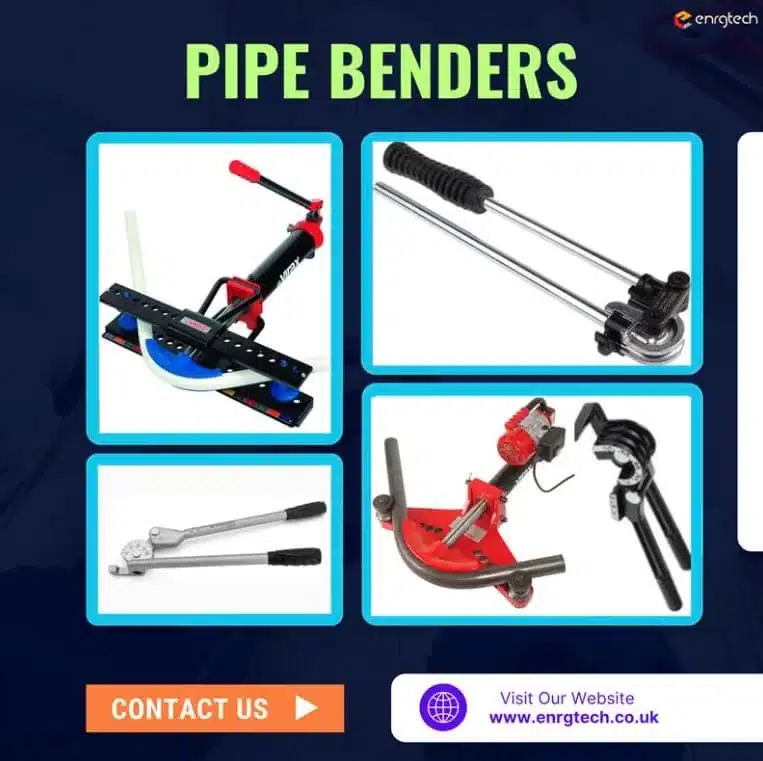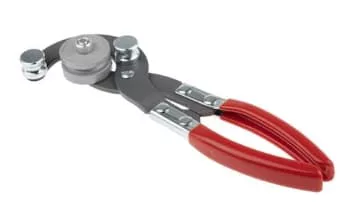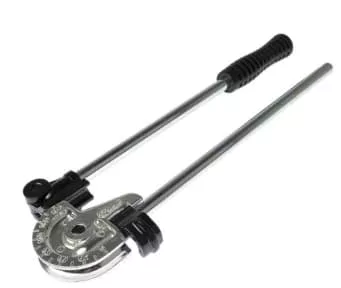
Introduction
When dealing with plumbing or fabrication projects, the sight of a straight pipe can often be deceiving. While it appears simple, the reality is that many jobs require it to navigate corners, bypass obstacles, or form specific shapes. This is where the humble pipe benders become an indispensable tool, transforming rigid, linear pipes into precisely curved components. This guide tells you everything about these specialist tools, covering their know-how, different types, and selection parameters to make your projects simple, efficient, and frustration-free.
What is a Pipe Bender and Why Do You Need One?
Pipe benders, also known as tube benders, are specialist tools used to bend pipes, tubes, and conduits to a desired angle or shape. These hand tools maintain the integrity and optimum flow of the pipe by avoiding kinking, collapsing, or flattening it. You need a pipe bender to achieve cleaner, smoother, and precise bends, resulting in improved aesthetics, material preservation, and reduced costs. Using a tube bender saves time, reduces material waste, and improves overall efficiency by routing the pipes around obstacles. Moreover, these specialist tools work by applying force evenly along the length of the pipe, making them ideal for plumbing, HVAC, construction, and automotive applications.
Why Bending Pipes is Better Than Cutting and Joining?
Bending pipes offers several advantages over using fittings and joints, primarily in terms of integrity, efficiency, and cost. When a pipe is bent, it retains its single, continuous form, eliminating the weak points inherent in joints. This continuous structure is less susceptible to leaks and corrosion, which often occur at the seams of joined pipes, leading to greater long-term reliability and safety. Furthermore, bending a pipe is a more efficient process, as it reduces the labour and materials needed for fittings, flanges, and welding. This not only speeds up installation but also lowers overall project costs by decreasing material waste and the need for skilled welding labour.
Key Types of Pipe Benders Explained: Exploring Their Variations
Pipe benders come in various forms, each suited for different materials, pipe sizes, and applications. Some of the standard types include:
- Manual Pipe Benders
Manual tube benders are handheld tools designed to bend a variety of pipes using manual force. Moreover, they come in various forms, built for light to medium-duty applications. These benders provide precise control over the bending process, are portable, affordable, and easy to operate, making them ideal for on-site bending tasks.
- Hydraulic Pipe Benders
These benders use hydraulic pressure to bend pipes, providing greater force and precision than manual benders. They offer fast and consistent results with minimal physical effort. Hydraulic tube benders are perfect for heavy-duty applications where bending thick pipes or pipes of large diameter is required.
- Electric Pipe Benders
Electric benders use electric motors to bend pipes, combining the convenience of automation with robust precision. However, they offer unparalleled speed and consistency and come with programmable settings and adjustable bending angles. Electric models are ideal for high-volume bending tasks requiring high productivity and consistent bending.
- Ratchet-Style Benders
These benders are similar to lever benders but incorporate a ratchet mechanism to reduce the physical effort. They feature a long handle and a ratcheting head that incrementally pulls the pipe around a former.
- Rotary Pipe Benders
Rotary benders use a rotating die and bending form to achieve smooth, accurate pipe bends. They can handle various pipe materials and sizes and come in either manual, electric, or hydraulic forms. Rotary tube benders produce uniform and consistent bends, especially in situations where multiple bends are needed along the same piece of pipe.
Materials & Sizes You Can Bend Using a Pipe Bender
Pipe benders can bend various materials and can accommodate a range of sizes, depending heavily on the type and capacity of the bender itself. Common materials that a pipe bender can bend include steel, copper, aluminium, brass, PVC, or plastic. In addition, manual benders are typically suited for softer metals like copper, brass, and aluminium, and can handle a moderate range of pipe diameters. Hydraulic or electric models can bend tougher materials like steel, stainless steel, and even some types of plastic pipes or PVC.
A tube bender can handle various sizes, typically from 1/4 inches to 2 inches in diameter, but some models can handle larger pipes depending on the bending radius and machine capacity. The material’s thickness and the pipe’s diameter will influence the bending process, with thicker pipes requiring more force or specialised equipment.
Buying Guide: Core Factors to Consider When Choosing the Right Pipe Bender
To make an informed choice, the purchase must fit your budget and quality, and there are crucial factors that need to be considered. When selecting the right pipe bender, the following parameters are important:
- Type of Pipe Bender
- Material Compatibility and Pipe Diameter
- Durability and Build Quality
- Ease of Use and Accuracy
- Capacity and Range
- Bend Radius
- Portability
- Budget and Brand
- User Reviews.
Final Thoughts
Pipe bending is a skill that is perfected with practice. A pipe bender is a valuable tool for anyone working with piping systems, offering clean bends, fewer joints, and long-lasting results. By understanding the different types of benders, their advantages, materials and sizes, and choosing the right tool for your project, you can confidently achieve professional-quality bends every time.























